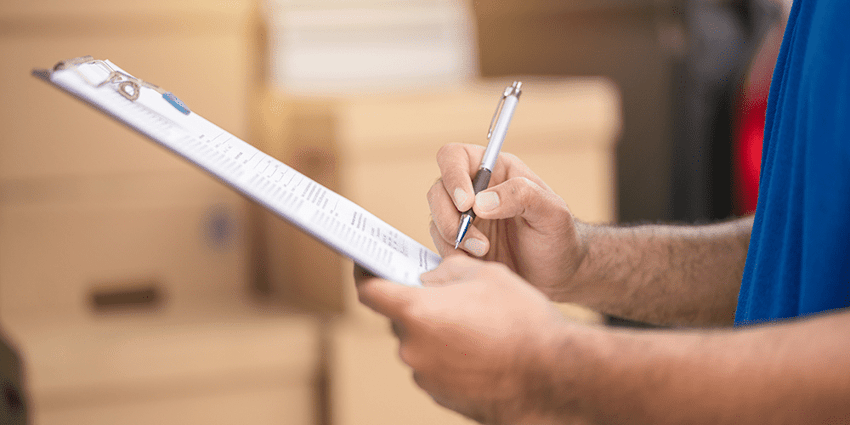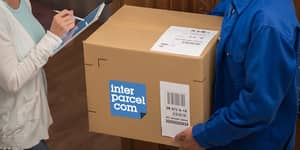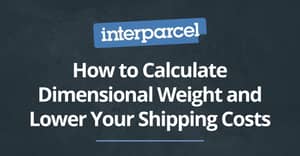If you're unfamiliar with commercial invoices or need a quick refresher on how to fill one out properly, you're in the right place!
When shipping a package internationally, it's crucial to complete a customs invoice. This information will generate a commercial invoice, which must be printed and attached to your parcel.
What is a commercial invoice?
A commercial invoice, sometimes called a customs invoice, is a necessary document for international shipments.
All parcels leaving the UK must include one.
The invoice provides key details, such as a description of the goods, the country of manufacture, and HS codes, which customs officials use to calculate applicable duties and taxes.
Our 2024 guide: Simplifying the customs invoice
Our updated guide will walk you through the process of completing a customs invoice step-by-step. We’ll break down each section so that you’ll be a pro at filling one out in no time.How to complete a customs invoice
We've made the process as simple as possible by incorporating the customs invoice into our booking system.
When choosing a delivery service for Europe or beyond, you’ll be prompted to fill in the customs invoice. Let’s go over the key sections:
Tax Status
Selecting the appropriate tax status depends on your specific situation. Here are the options:
Private Individual:
For non-business shipments intended for personal use.
Company - Not VAT Registered:
For businesses with an annual taxable turnover under £85,000, sending items for commercial purposes.
Company - VAT Registered:
For VAT-registered businesses with a turnover exceeding £85,000. You’ll need to input your nine-digit VAT number issued by HMRC.
Reason for Export
This section affects the taxes applied to your shipment. Here are the reasons you can select:
- Gift: Items exchanged for non-commercial purposes (adding 'gift' to the description is helpful).
- Sale: Goods sold and shipped to the buyer.
- Sample: Non-saleable items sent for evaluation.
- Repair: Goods being repaired or returning after repair.
- Return: Previously sent goods being returned.
- Documents: Shipments containing paperwork.
- Personal Effects: Personal items like luggage.
IOSS Number (for EU deliveries)
If exporting goods sold to EU buyers, you can include your IOSS (Import One-Stop Shop) number, which simplifies VAT compliance for B2C shipments under €150 (£135).
UK businesses aren't required to register for IOSS but it can streamline your EU shipments if you send regularly.
EORI Number
An EORI (Economic Operator Registration and Identification) number is needed for businesses trading goods with the EU, or any individual selling an item to the EU.
UK businesses will have an EORI number starting with 'GB' followed by 12 digits, which should be entered in the 'Sender's EORI number' field.
For shipments to EU businesses, it’s also recommended to include the recipient's EORI number to speed up customs clearance.
Further EORI information for UK businesses with a VAT number can be found at this link, or for non-VAT businesses and individuals at this link.
Parcel Contents
Item Description and Quantity
Provide detailed information about the items in your parcel. Customs authorities rely on accurate descriptions to assess your shipment.
It is especially important to accurately describe, and declare, the contents of parcels (including how many units you are sending of each). Remember to be as descriptive as possible and not be vague (e.g. just listing "documents"). Below we have listed some common descriptions and what they should be amended to in order to not cause any delays in transit:
- Documents - could be "Property sale documents"
- Spare Parts - could be "1 x Volkswagen Golf plastic door trim spare part"
- Samples - could be "4 x Square bathroom tile samples"
- Gift - could be "1 x Gift of PlayStation game"
- Clothing - could be "1 x Black womens denim jacket - size small"
Please note that parcels sent with vague descriptions of the goods may be returned and subject to surcharges as a result.
HS Code
Harmonised System (HS) codes are required for all shipments to identify the type of goods being transported. This is important for customs to apply the correct duties. You can find your HS code through our HS Code Lookup Tool by entering a product description.
The Gov website has a HS lookup tool which can be viewed at this link.
Country of Manufacture
The country where your item was made is crucial for determining duties. If an item is made from components sourced from different countries, the country of manufacture is where the item underwent the most significant transformation.
Value
You must declare the value of each item, as this will impact the duties applied. Be sure to provide the correct value to avoid penalties. The value could be:
- Commercial/Retail value: The price paid by the end customer.
- Wholesale value: The bulk purchase price.
- Cost price: The cost of producing the item.
Undervaluing your items can result in delays or extra charges.
Final Steps: Complete Your Booking and Print Your Invoice
Once the customs invoice is filled out and your booking is complete, print three copies. Two should be attached to the outside of your package in a waterproof wallet, and one placed inside for the recipient.
Filling out a customs form might seem complicated at first, but by following these steps, you'll breeze through the process and have your international parcel on its way in no time. Need more assistance? Contact our parcel experts via phone, email, or live chat!










 Facebook
Facebook Twitter
Twitter Instagram
Instagram Linked In
Linked In YouTube
YouTube